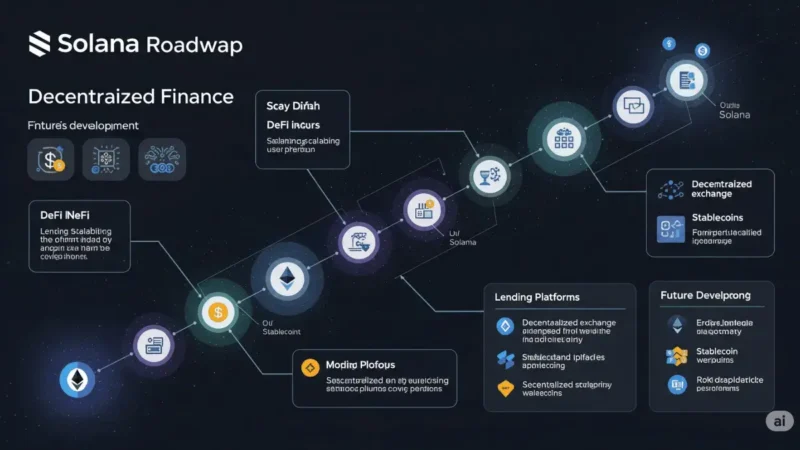The New Identity Crisis: How the Digital Product Passport Will Redefine Global Supply Chains

Key Points (TL;DR)
- Europe is currently advancing the Digital Product Passport (DPP) initiative, creating a mandatory digital identity for products sold within the EU.
- The Digital Product Passport is the cornerstone of the EU’s Ecodesign for Sustainable Products Regulation (ESPR) and the broader Circular Economy Action Plan.
- It is a digital record, accessible via QR codes or RFID tags, that stores comprehensive, verifiable data across a product’s entire lifecycle—from raw material sourcing to disposal.
- The data includes material composition, carbon footprint, repair/disassembly instructions, compliance certifications, and more.
- The primary goal is to boost transparency, combat greenwashing, and enable circular business models (repair, reuse, and recycling).
- Initial product categories targeted for implementation (starting as early as 2027) include batteries, textiles, and consumer electronics.
The Evolution of Product Transparency
For decades, the journey of a physical product—from the extraction of its raw materials to its ultimate disposal—has largely been opaque to the end consumer, and often, even to the retailers selling it. This information gap has hindered sustainability efforts, enabled “greenwashing,” and made regulatory oversight and waste management exceedingly difficult.
Europe is now advancing a monumental initiative to solve this fundamental lack of transparency through the Digital Product Passport (DPP). The DPP is not merely a digital label; it is a comprehensive, machine-readable data set linked to every regulated product sold in the EU market, irrespective of its country of origin. This plan represents the continent’s most significant step toward realizing a truly Circular Economy and establishes a new global benchmark for supply chain accountability.
Officials point to rising pressure for dependable reporting systems built to endure demanding review across product lifecycles. This pressure comes from consumers demanding ethical sourcing, businesses seeking to comply with sustainability mandates, and regulators needing clear, verifiable data for enforcement. The Digital Product Passport is the technical infrastructure designed to meet all these needs simultaneously.
A Mandate for Digital Identity: The DPP’s Core Function
The Digital Product Passport is a mandatory requirement under the EU’s Ecodesign for Sustainable Products Regulation (ESPR), which came into force in 2024. Its concept is simple: attach a digital “twin” to the physical product that captures and updates key information throughout the product’s entire lifespan.
What Data Does the Passport Contain?
The information required for the Digital Product Passport is far more extensive than a standard product label. While the exact requirements will vary by product category, the core data points fall into several critical groups:
- Material and Origin Data: Detailed breakdown of the product’s composition, including materials used, the percentage of recycled content, and the source/country of origin for key components. Documentation on the presence of Substances of Very High Concern (SVHC) is also required.
- Sustainability Profile: Environmental impact metrics, most notably the Carbon Footprint data from manufacturing, transportation, and usage.
- Compliance and Identification: A Unique Product Identifier (UID) (often via a QR code, RFID tag, or NFC chip attached to the product itself), the manufacturer’s details, and official EU Declarations of Conformity.
- Circularity and End-of-Life: Crucial information for extending the product’s life, including repair, maintenance, and disassembly instructions, as well as clear guidelines for recycling and proper disposal.
The unique identifier acts as the gateway to the cloud-hosted passport, ensuring that this digital record follows the item from its raw materials stage, through manufacturing, retail, consumer use, and finally, disposal or reuse.
Strategic Impact on Global Supply Chains
For industries relying on complex global supply chains, the implementation of the Digital Product Passport presents both a massive challenge and a profound opportunity.
Verification and Oversight
The new rules place immense pressure on manufacturers and importers to establish robust, verifiable digital records across all tiers of their supply chains. The days of relying on paper trails or unverified claims for sourcing and sustainability will end.
- Due Diligence: Companies must implement systems to track raw materials from their source, linking environmental and social impact data directly to the product’s chain of custody. This enhanced traceability supports due diligence efforts against issues like forced labor and unethical sourcing.
- Fighting Greenwashing: For regulators and consumers, the DPP provides a powerful tool to streamline enforcement and customs clearance. Environmental claims must now be substantiated by the data contained within the auditable passport, making misleading “greenwashing” practices much harder to execute.
Enabling the Circular Economy
The primary philosophical driver behind the Digital Product Passport is the EU’s commitment to transitioning from a linear “take-make-dispose” economy to a circular one. By standardizing the disclosure of repair and disassembly data, the DPP empowers new, sustainable business models:
- Repair and Reuse: Independent repair shops and consumers will have instant, reliable access to repair manuals and information on spare part availability, making products easier and more economical to fix.
- Efficient Recycling: Recycling facilities will be able to access detailed material composition data at scale, drastically improving the efficiency of sorting, separation, and material recovery, minimizing waste and maximizing resource utilization.
- New Services: The data rich environment enables new revenue streams, such as certified resale platforms, rental schemes, and manufacturer-led take-back programs, effectively monetizing product longevity and sustainability.
Implementation Timeline and Initial Focus
The implementation is phased, starting with product categories identified as having the greatest environmental impact or potential for circularity improvement.
Priority Product Categories
While the regulation is intended to eventually cover almost all products sold in the EU (excluding only food, feed, and pharmaceuticals), the first sectors facing mandatory compliance include:
- Batteries: Vehicle and industrial batteries are the first wave, with requirements for a Battery Passport set to begin enforcement in February 2027. This will track carbon footprint, recycled content, and durability.
- Textiles and Footwear: Driven by the enormous environmental footprint of fast fashion, these sectors will require detailed information on fiber content, production location, and recyclability.
- Consumer Electronics and ICT: Requirements will focus on durability, repairability, and end-of-life options for complex items like smartphones and computers.
- Construction Products and Furniture are also high on the priority list for subsequent implementation.
Companies, regardless of where they manufacture their goods, must begin preparing now by mapping and digitizing their entire supply chain, identifying data gaps, and upgrading their IT systems (such as ERP and PIM systems) to handle the structured, machine-readable data required for the Digital Product Passport.
Stay informed, read the latest crypto news in real time!
Conclusion: The Digital Leap for Crypto Traceability
For the blockchain and crypto community, the Digital Product Passport represents a monumental use case for distributed ledger technology (DLT) and verifiable credentials. While the EU has specified open standards and machine-readability, DLT offers the ideal underlying platform for storing and managing data that must be immutable, verifiable, and accessed on a permissioned basis. The principles of cryptographic traceability that underpin blockchain will be essential for manufacturers to securely prove the authenticity of their DPP data to regulators and consumers, turning this massive regulatory challenge into a catalyst for decentralized, transparent supply chain solutions.






